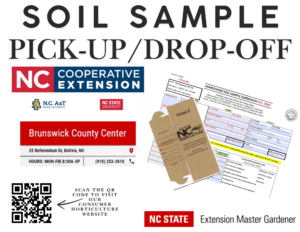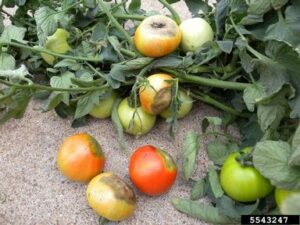A Cautionary Tale on Vegetable Garden Fertilizing
go.ncsu.edu/readext?1073443
en Español / em Português
El inglés es el idioma de control de esta página. En la medida en que haya algún conflicto entre la traducción al inglés y la traducción, el inglés prevalece.
Al hacer clic en el enlace de traducción se activa un servicio de traducción gratuito para convertir la página al español. Al igual que con cualquier traducción por Internet, la conversión no es sensible al contexto y puede que no traduzca el texto en su significado original. NC State Extension no garantiza la exactitud del texto traducido. Por favor, tenga en cuenta que algunas aplicaciones y/o servicios pueden no funcionar como se espera cuando se traducen.
Português
Inglês é o idioma de controle desta página. Na medida que haja algum conflito entre o texto original em Inglês e a tradução, o Inglês prevalece.
Ao clicar no link de tradução, um serviço gratuito de tradução será ativado para converter a página para o Português. Como em qualquer tradução pela internet, a conversão não é sensivel ao contexto e pode não ocorrer a tradução para o significado orginal. O serviço de Extensão da Carolina do Norte (NC State Extension) não garante a exatidão do texto traduzido. Por favor, observe que algumas funções ou serviços podem não funcionar como esperado após a tradução.
English
English is the controlling language of this page. To the extent there is any conflict between the English text and the translation, English controls.
Clicking on the translation link activates a free translation service to convert the page to Spanish. As with any Internet translation, the conversion is not context-sensitive and may not translate the text to its original meaning. NC State Extension does not guarantee the accuracy of the translated text. Please note that some applications and/or services may not function as expected when translated.
Collapse ▲According to the Eastern North Carolina Planting Calendar for Annual Vegetables, Fruits, and Herbs, Summer is one of the three optimal vegetable growing seasons in coastal North Carolina. Warm season vegetables that were transplanted in mid-April are progressing through their life cycles becoming mature plants with blossoms that will eventually develop into a harvestable food crop.
There are several times during a vegetable plant’s life cycle that it is recommended to fertilize. A soil test facilitated through the local Cooperative Extension Office is the most accurate way to determine when and how much fertilizer to apply.
Fertilizing while the plants are seedlings or at the time of transplanting is initially recommended. Once vegetables have grown to a healthy size, hold back any further fertilizing until the plant sets fruit. Do not fertilize vegetable plants when it is actively flowering, as it may slow fruit production and cause excessive growth. At the time fruit is forming, additional fertilizer can be added to individual plants or side dressed down rows.
To some people, using pre-mixed fertilizer products, referred to as “plant food”, from box stores is a no-brainer. These products offer a level of convenience and simplicity suited for novice gardeners and are often a more economical choice. Plant food can be a quick and easy solution to fertilizing, oftentimes making for a successful gardening season. But pre-mixed fertilizers can do more long-term harm to vegetable gardens despite the boost in plant growth it gives. The use of these products in vegetable gardens can be detrimental to soil fertility. These products stifle naturally occurring soil microbes through the water-soluble fertilizers that have a high salt content.
The high salt content of synthetic fertilizers destroys the living, breathing organisms in the soil that is crucial for healthy plants. These products supply a large amount of readily-available nitrogen that is derived from synthetic ammonium. Ammonium is a good thing but too much of it can be extremely detrimental to vegetable gardens, especially to tomato plants.
Too much nitrogen can not only decrease tomato plant yields and burn its foliar tissue, but it can also introduce diseases such as Blossom-End Rot. The disease starts small at first with a small, dark, water-logged, circular area appearing at the bottom of the fruit. As the disease progresses, the entire bottom half of the fruit develops these characteristics, making it un-harvestable and inedible. To avoid this nasty disease in tomatoes and other vegetables this year, avoid using synthetic fertilizers that are high in ammonium nitrate. Instead of using pre-mixed fertilizers or plant food this year, consider conducting a soil test because soil fertility is not one size fits all!





